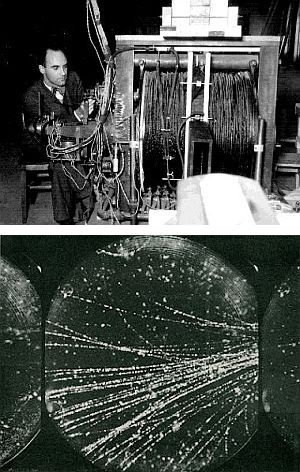 Cloud Chamber
Cloud Chamber

The cloud chamber, also known as the Wilson chamber, is a particle detector used for detecting ionizing radiation. It was invented by Charles Thomson Rees Wilson a Scottish physicist of the late 19th century. He pursued the application of this discovery and perfected the first cloud chamber in 1911. He along with Arthur Compton, received the Nobel Prize in Physics in 1927 for his work on it.
In its most basic form, a cloud chamber is a sealed environment containing a supersaturated vapor of water or alcohol. When a charged particle interacts with the mixture, it ionizes it. The resulting ions act as condensation nuclei, around which a mist will form or a trail will be left.
Cloud chambers played a prominent role in the experimental particle physics during three decades, allowing the discoveries of the positron by Carl Anderson in 1932 and the kaon in 1953.
Further developments of the chamber were made. First by Patrick Blackett who utilised a stiff spring to expand and compress the chamber very rapidly, making the chamber sensitive to particles several times a second and adding a film system to record the images. Other developments were the diffusion cloud chamber (1939) by Alexander Langsdorf which differs from the expansion cloud chamber in that it is continuously sensitized to radiation, and in that the bottom must be cooled to a rather low temperature. Also the bubble chamber invented by Donald A. Glaser (1952) which similarly reveals the tracks of subatomic particles, but as trails of bubbles in a superheated liquid, usually liquid hydrogen.
Cloud chambers were often used in balloon-borne cosmic ray research. Several experiments were performed using these apparatus by teams of Minnesota University and Caltech during late 50's and early 60's.

